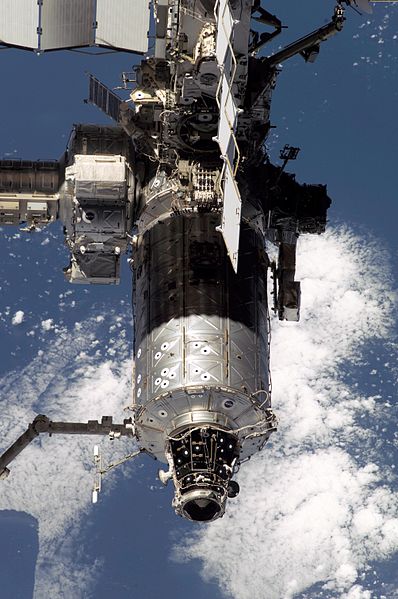External stowage platform
External stowage platforms (ESPs) are key components of the International Space Station (ISS). Each platform is made from steel and serves as an external pallet that can hold spare parts, also known as orbital replacement units (ORUs), for the space station. As a platform it is not pressurized, but does require electricity to power the heaters of some of the stored equipment. ORUs are attached to the ESP via Flight Releasable Attachment Mechanisms (FRAMs), matching witness plates that mate the ORU to the platform.
STS-102 ICC carrying ESP-1 on its underside
Another view of ESP-1
ESP-1 attached to the Destiny portside trunnion pin on the right
ESP-2 updated FRAM ORUs
Orbital replacement units (ORUs) are key elements of the International Space Station that can be readily replaced when the unit either passes its design life or fails. ORUs are parts of the main systems and subsystems of the external elements of the ISS, none are intended to be installed inside the pressurised modules. Examples of ORUs are: pumps, storage tanks, controller boxes, antennas, and battery units. Such units are replaced either by astronauts during EVA or by the Dextre (SPDM) robotic arm. All are stored on the three external stowage platforms (ESPs) or the four ExPRESS Logistics Carriers (ELCs) mounted on the Integrated Truss Structure (ITS).
ESP-2 platform mounted to the Quest module (pallet deployed)
ELC-3 in the grasp of Endeavour's robotic arm STS-134 (pallet deployed)
ICC in the forward end of the payload bay STS-102 (retained in the payload bay throughout the flight)
ICC-Lite payload structure STS-122 (retained in the payload bay throughout the flight)








